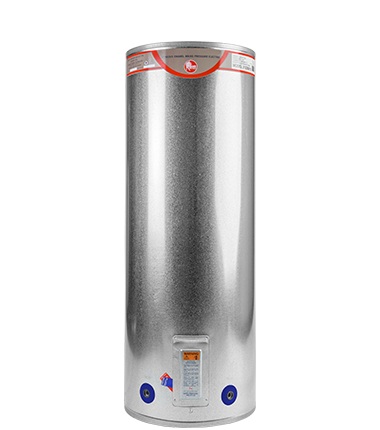Dealing with a Leaking Hot Water Cylinder - Causes, Solutions, and Prevention
- Get link
- X
- Other Apps
A leaking hot water cylinder can quickly disrupt your household, causing inconvenience, increased energy bills, and water damage if not addressed. Understanding the causes of a leak and knowing how to handle it can save you time, money, and unnecessary stress. Here’s an in-depth guide on identifying leaks, addressing the issue, and preventing future problems with your hot water cylinder.
Common Causes of a Leaking Hot Water Cylinder
Leaks in hot water cylinders typically stem from a few main sources. Knowing the likely cause will help you decide on the best course of action.
1. Loose or Faulty Pipe Connections
Pipe connections may loosen over time due to regular expansion and contraction, causing water to seep out. Loose fittings are often a straightforward fix, but it’s essential to confirm that this is the root cause before assuming it’s an easy repair.
2. Corrosion and Rust
Over time, metal cylinders can corrode, especially if they aren’t well-maintained. Corrosion weakens the metal, creating holes or cracks that lead to leaks. Rust in older units is a frequent issue and usually means the cylinder is nearing the end of its lifespan.
3. Excessive Pressure
If the pressure inside the tank builds up too much, it can strain the cylinder and its valves, resulting in leaks. High pressure often results from a faulty temperature and pressure relief (TPR) valve or overly high thermostat settings.
4. Faulty Temperature and Pressure Relief Valve (TPR Valve)
The TPR valve is designed to release pressure if it gets too high. If the valve is broken or malfunctioning, it might leak continuously, indicating an underlying issue with pressure regulation in the tank.
5. Age of the Cylinder
Hot water cylinders generally last around 10 to 15 years. If your tank is approaching this age or older, leaks may indicate it’s time to replace the cylinder rather than repair it.
Steps to Address a Leaking Hot Water Cylinder
Step 1: Identify the Source of the Leak
- Check around the cylinder for visible signs of water pooling or dripping. Common leak points include the base, around pipe connections, and near the TPR valve.
- Isolate the issue by turning off the power and water supply to the heater. This step will help prevent further water damage and give you a better view of the leak’s source.
Step 2: Shut Off the Water Supply
Turn off the cold-water intake valve to stop water from flowing into the tank. This will limit water damage until repairs can be made.
Step 3: Contact a Professional if Necessary
For major leaks or leaks related to corrosion and rust, call a licensed plumber. Attempting to fix these issues yourself could lead to further damage and safety concerns.
Step 4: Temporary Fixes (If Professional Help Is Unavailable)
- Tighten loose connections around pipes or fittings using a wrench, being careful not to over-tighten and cause damage.
- Apply plumbing tape or epoxy for minor leaks in accessible areas, which may help contain the leak until professional help arrives.
When to Replace vs. Repair
If your hot water cylinder is more than a decade old and has a significant leak or corrosion, replacement may be more cost-effective in the long run. Repairing an older unit might result in temporary fixes, whereas a new, energy-efficient model could save you money on energy and maintenance costs over time.
Preventing Future Leaks in Hot Water Cylinders
1. Regular Maintenance
Annual inspections by a plumber can help catch early signs of wear, pressure issues, or minor leaks before they escalate. Routine maintenance extends the lifespan of your cylinder and ensures it runs efficiently.
2. Monitor Pressure Settings
Ensure that your water heater’s thermostat is set within the recommended range (usually around 60°C or lower) to prevent excessive pressure buildup. Pressure-reducing valves can also be installed to keep levels manageable.
3. Drain the Cylinder Periodically
Sediment can accumulate at the bottom of your hot water cylinder over time, leading to rust and corrosion. Draining and flushing the tank once or twice a year helps remove this sediment, reducing the likelihood of leaks.
4. Install a Drip Tray
For added protection, install a drip tray beneath the hot water cylinder. A tray won’t stop leaks but can contain minor leaks, protecting your flooring and alerting you to potential issues.
Choosing a Replacement Cylinder
If you find that your existing cylinder needs replacing, look for energy-efficient models with features that help prevent leaks, like anti-corrosion coatings or built-in pressure management systems. Models from reliable brands and those with solid warranties offer peace of mind and durability.
Conclusion
A leaking hot water cylinder can be a major inconvenience, but understanding the causes and solutions can make dealing with it far simpler. By acting promptly, performing regular maintenance, and replacing old units as needed, you can avoid the damage and disruption that leaks can bring. Remember, consulting a professional when in doubt is often the best approach for long-term efficiency and safety,
Hot Water Solutions
3d Taid Place, Rosedale, Auckland0800497658
- Get link
- X
- Other Apps




Comments
Post a Comment